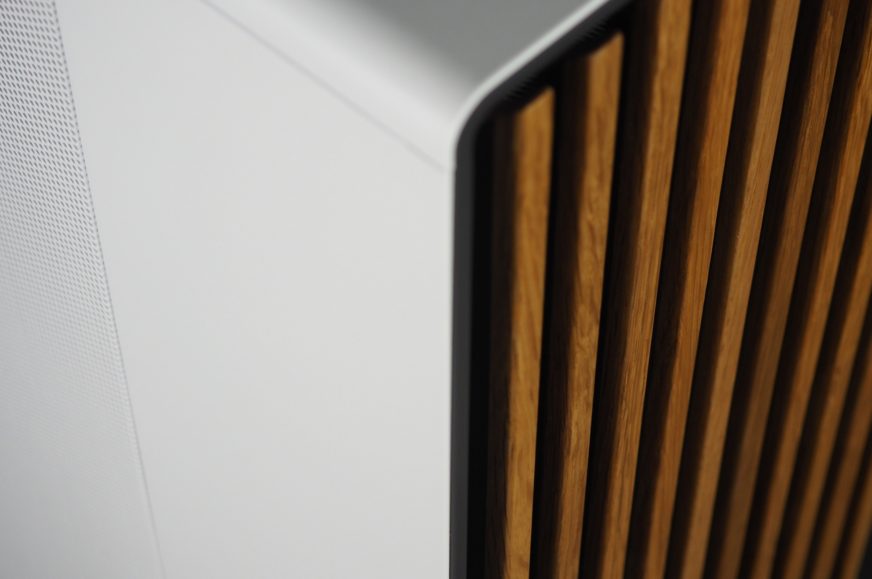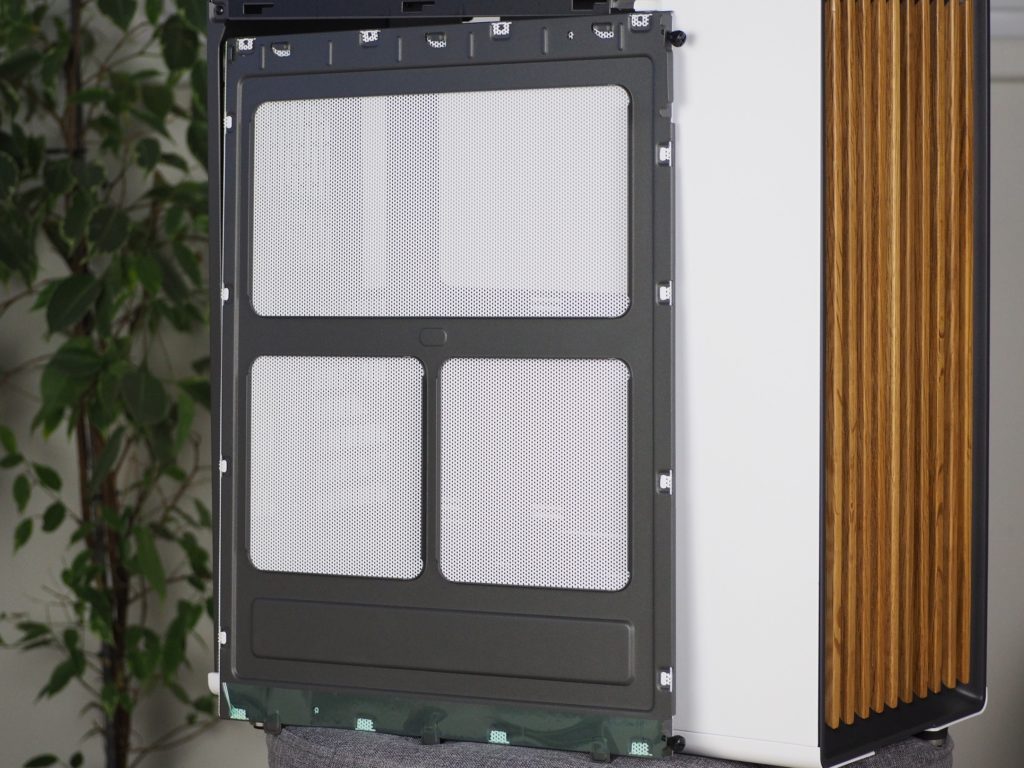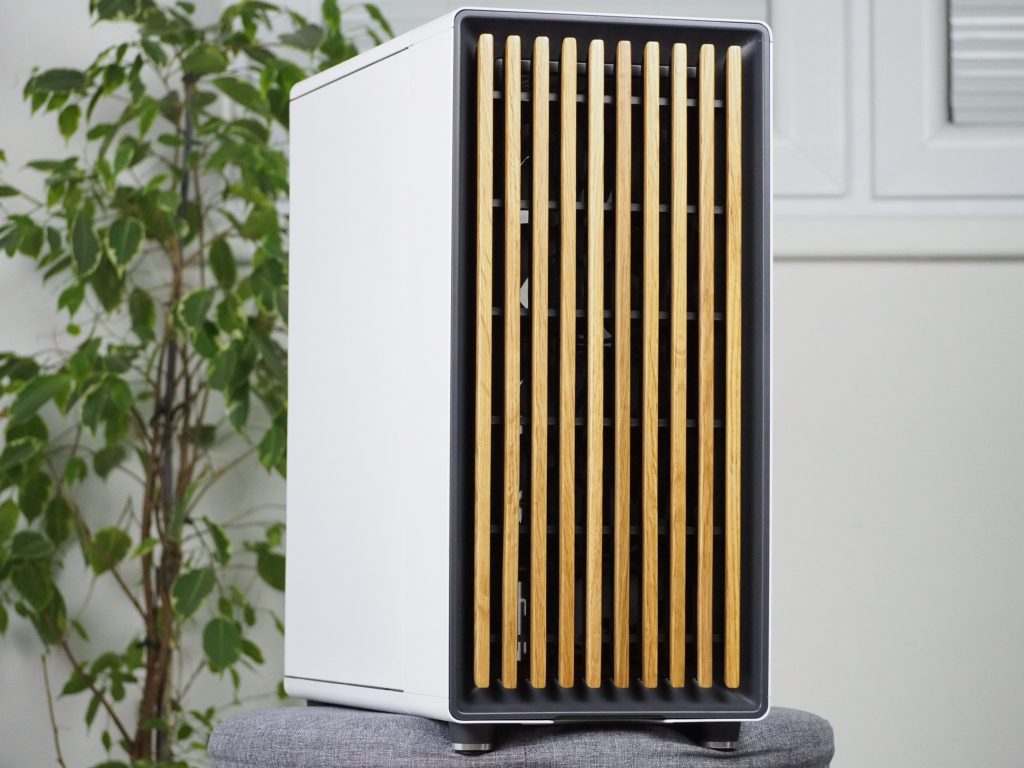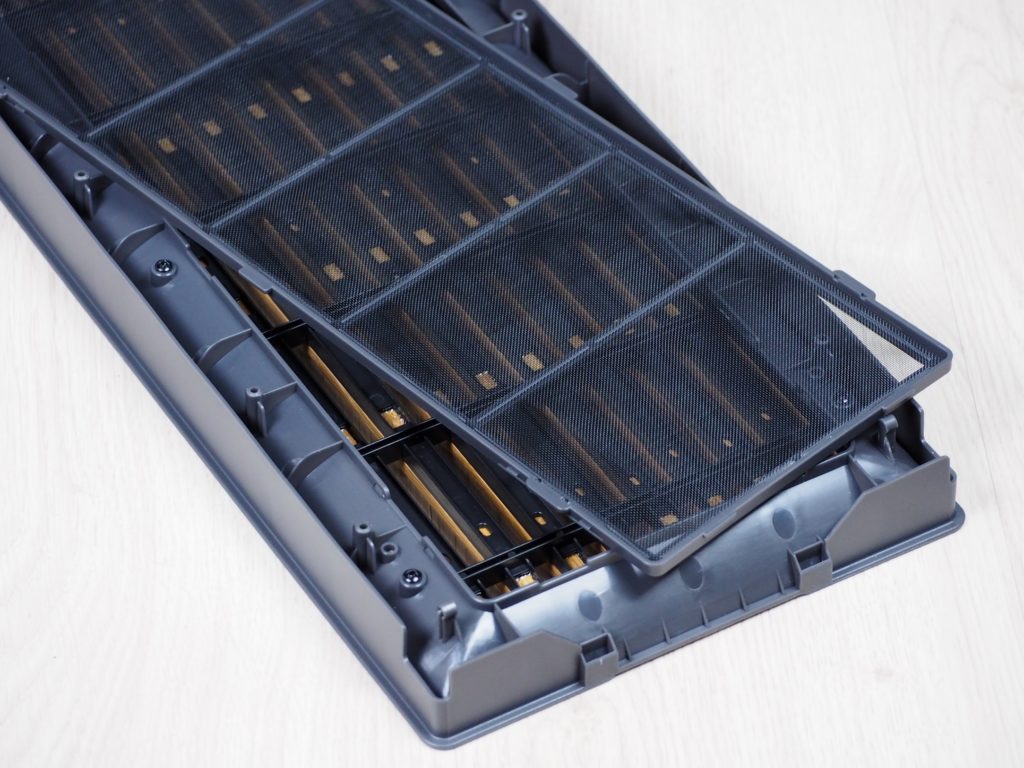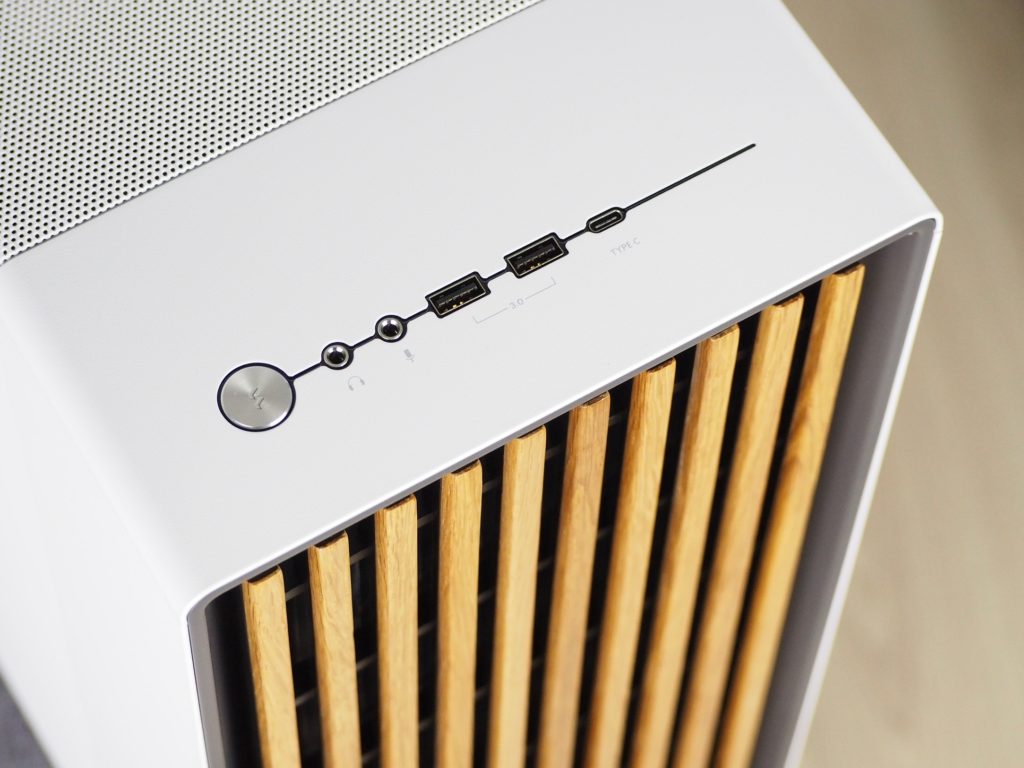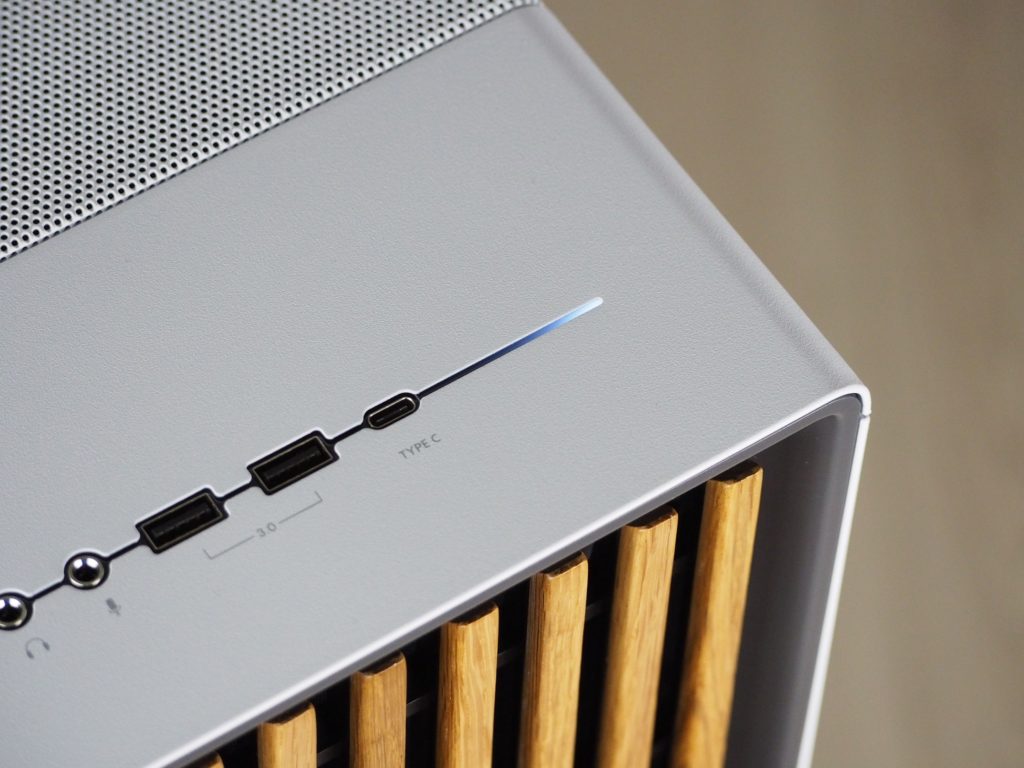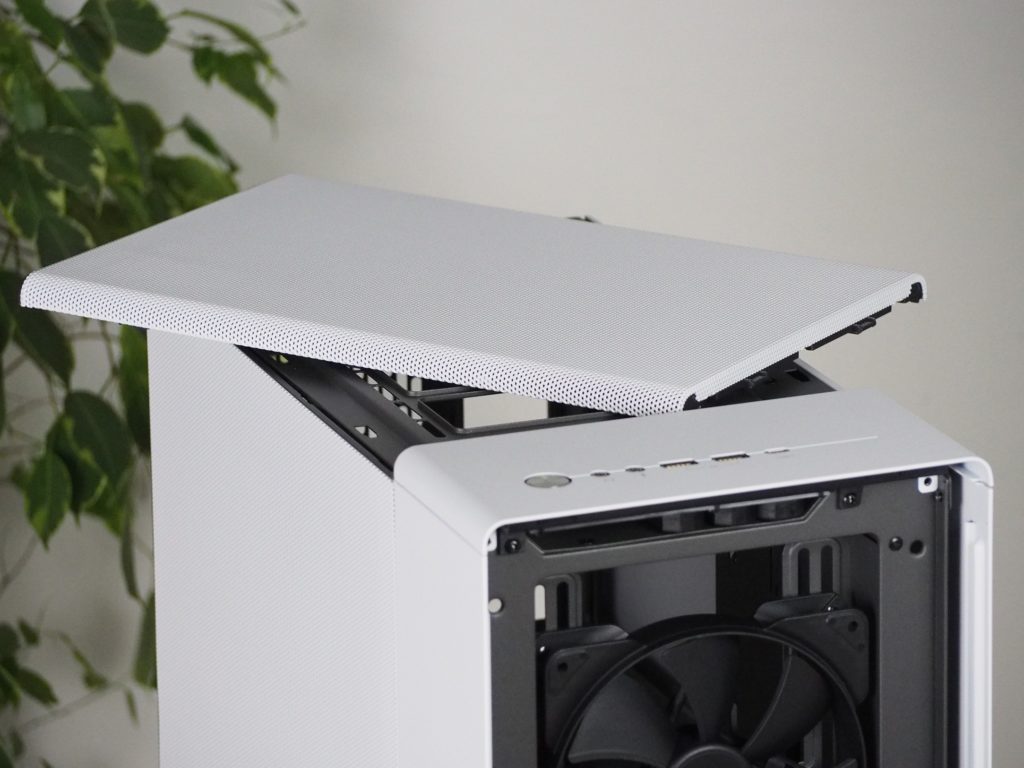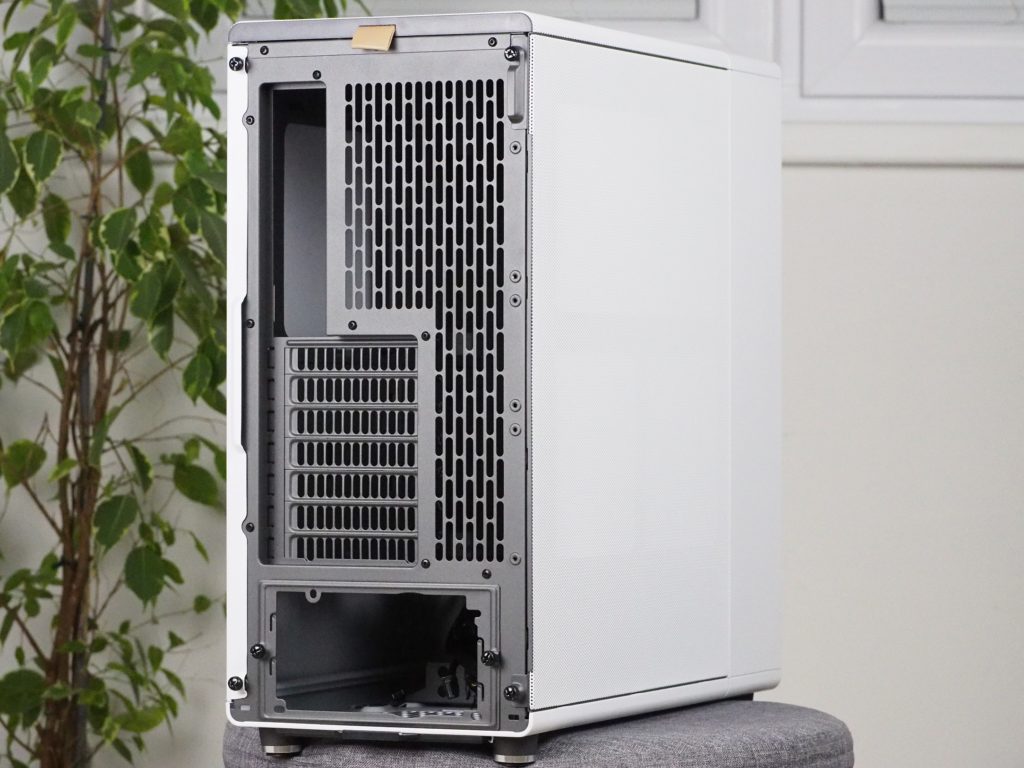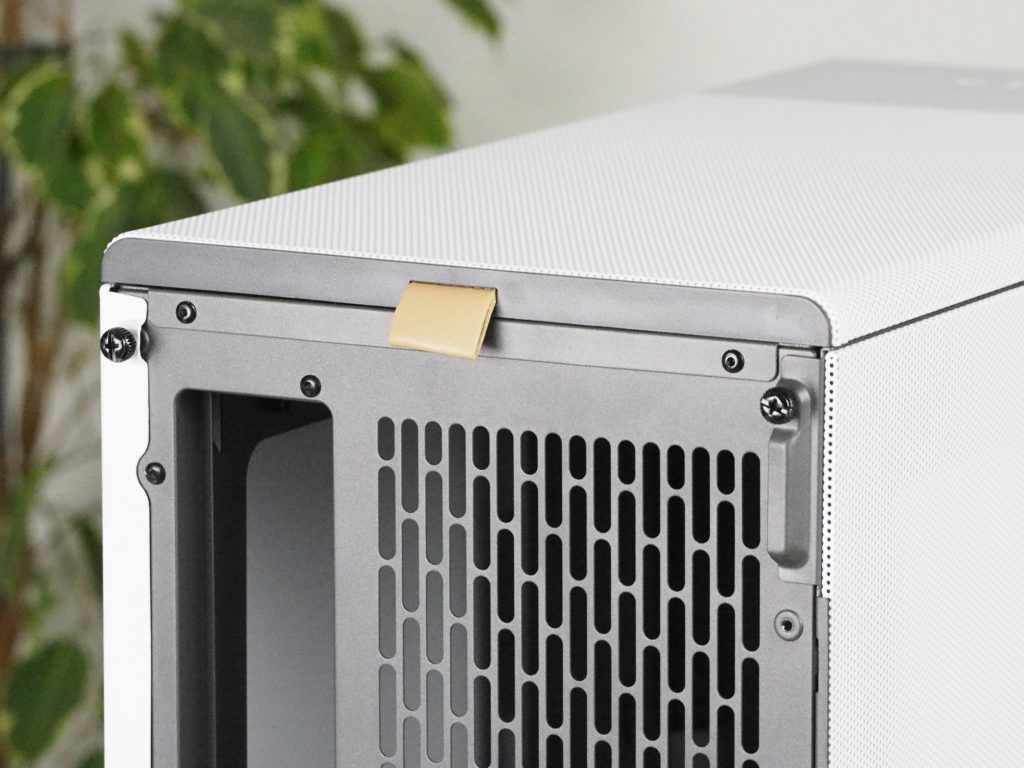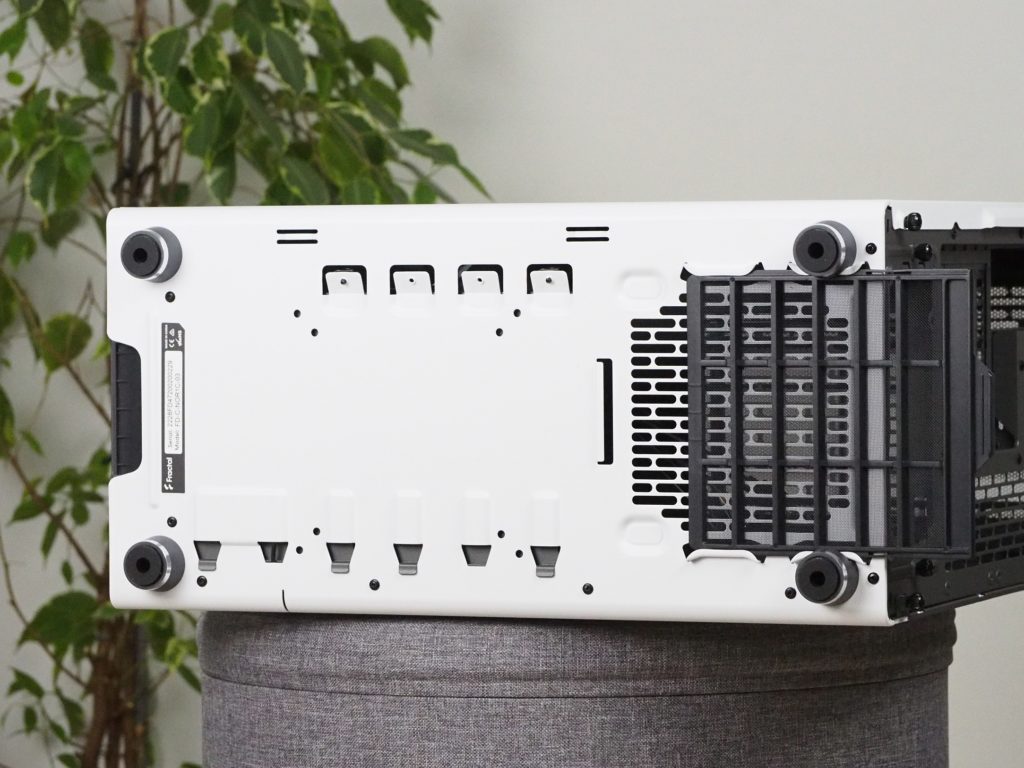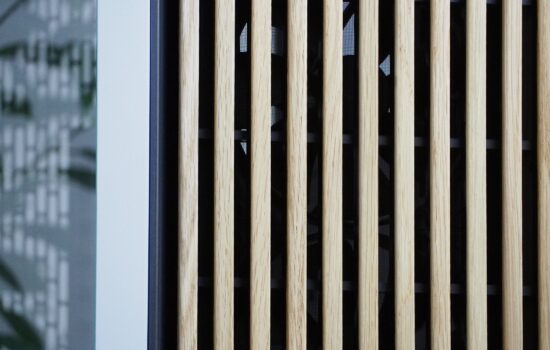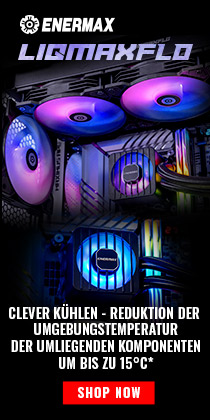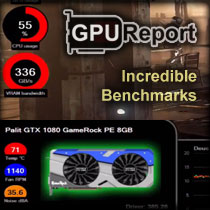Exterior
North: a case that is designed to be closer to the modern home. In some places, Fractal Design has replaced plastic and metal with wood and faux leather. The tested variant of the North case, with the additional Mesh designation, not only has a perforated front, but also the side panel, which makes new cooling options available. In addition to the factory configuration, we will also test the case with fans in non-traditional positions.
Basic parameters
| Parameters | Fractal Design |
| North Mesh | |
| Supported motherboard formats | Mini-ITX, mATX, ATX |
| Supported PSU format | ATX |
| CPU cooler | up to 170 mm |
| Graphics cards | up to 355 mm |
| Fan | 6× 140 mm (2× preinstalled)/8× 120 mm/1× 80 mm |
| Supported liquid radiators | 1× up to 360 mm + 1× up to 240 mm + 1× 120mm |
| 2,5" positions | 2 + 2 shared + 1 optional |
| 3,5" positions | 2 shared + 1 optional |
| 5,25" positions | 0 |
| Dimensions [H/D/W] (and volume) | 469 × 447 × 215 mm (45 l) |
| Weight | 7,6 kg |
| Materials | steel + plastic + wood + faux leather |
| Connectivity | 2× USB 3.2 gen. 1 + 1× USB 3.2 gen. 1 type C + 2× 3,5 mm jack |
| Approximate price | 155 EUR |
Exterior
Everything is packed in a standard cardboard box with labels for quick overview. The case is wrapped in polyurethane foam. It does not leave behind such a mess as, for example, polystyrene. The contents, as we are used to with Fractal Design, are somewhat plentiful. Compared to the usual screws, single-use zip ties and anti-vibration pads for 3.5″ drives, you also get a fan holder for the left side panel. But this is only supplied with the Mesh version of the case. Of course, there is also a detailed manual showing the different mounting options for the case.
With most cases with the “mesh” designation, you’d think they’d have something perforated, usually the front panel. With the North we tested, it takes on a bit more meaning and the left side panel is perforated as well. If you were worried about the sheet metal being flexible like that, you don’t have to be. On the inside, the sidewall is reinforced with a sheet metal frame. The perforations here are 0.9 mm in size, which at the given perforation area size will ensure sufficient airflow. While I’ve become accustomed to Fractal Design’s more expensive cases using a latching system, here they’ve stayed true to the simple screws in the back. Luckily, they are double threaded so at least they stay in the side panels of the case even after they are removed.
The first thing that catches the eye on the case is the front panel, which is partly made of wood. The white case is made of oak, the black case is made of walnut. The entire wooden panel can be removed.There is a cut-out at the bottom that can be pulled. So you don’t have to lift anything, as is usual. Inside is a nylon dust filter that will prevent most dust particles from being sucked in. Behind the front panel, two Aspect 14 PWM fans in 140mm format await you. If you’d like to fit other fans, there’s room for three 120mm fans or even a liquid cooler radiator of up to 360mm.
As far as compatibility is concerned, the top I/O panel with connectors doesn’t impress, but it doesn’t disappoint either. You get one USB Type-C and two Type-A connectors. The audio side hasn’t been forgotten either, so you’ve got two 3.5mm jacks for headphones and a microphone. The power button is elegantly done. I must note that the response when you press it is pleasant. Power on is indicated by a subtle LED illumination, which is placed in a line intersecting all the elements on the control panel.
The rest of the top is perforated, as is the left side panel. The metal panel can be removed by simply pulling it backwards, making it easier to install components inside the case. Also on the ceiling, according to the manufacturer, fans can be mounted, two 140mm ones, or a liquid cooler radiator of up to 240 mm. The I/O panel cover can also be removed via two screws on the top and two on the front. This gives you easy access to the controller with connectors should you decide to do some “service” work at home as well.
The back side is not very different from most cases. On the bottom there is an opening with a frame for mounting an ATX power supply. Above that are the PCI Express expansion card slot covers. These are modified to accommodate a single 80mm fan. This could be used to push air under the graphics card. Above is a standard hole for the motherboard I/O panel, next to it are vents with the possibility of fitting a 120mm fan. It’s surprising that they didn’t place one fan right here from the factory. Of the two in the front, you can’t put one here because of the size (140 mm). The back is finished off with a faux leather strap that serves to pull the top panel. I didn’t use it a single time. Rather, I pushed the panel from the front to the back.
The case is held off the ground by four feet, which are fitted with non-slip rubber. It puts a lot of resistance when moving the case on the desk. A fine dust filter, which is also used at the front, protects the power supply against dust.
- Contents
- Exterior
- Interior
- Test methodology
- CPU and GPU cooling tests
- Motherboard cooling tests
- SSD cooling tests and under-ceiling temperature
- Conclusion





